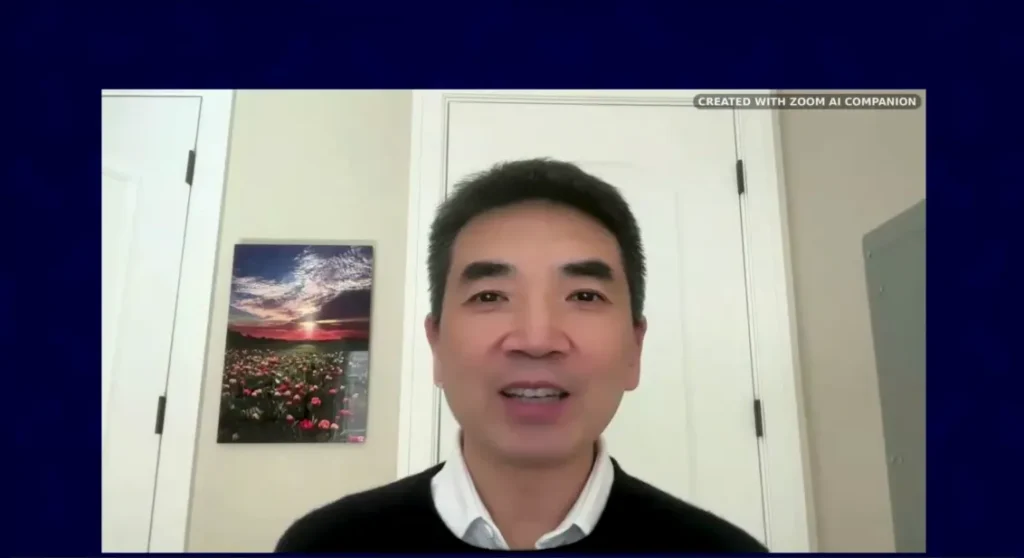Two of the world’s most recognized tech brands—Klarna and Zoom—are putting a new face on executive leadership: one powered by artificial intelligence. In recent earnings calls, both companies used CEO AI avatars instead of their real-life leaders, raising fresh questions about the future of business communication and digital trust.
Klarna’s CEO Sebastian Siemiatkowski and Zoom’s Eric Yuan didn’t just delegate—they sent their digital twins. These lifelike avatars, trained on hours of previous footage, spoke on their behalf, stirring excitement and concern in equal measure. Is this the next evolution of executive presence or simply a flashy tech stunt?
Inside the AI Avatar Debuts: Klarna and Zoom Lead the Charge
Klarna kicked things off during its May 2025 earnings call. Siemiatkowski’s avatar took center stage, presenting the company’s $701 million in quarterly revenue and celebrating a fourth consecutive profitable quarter. But the digital double wasn’t flawless. Viewers noted strange blinking and slightly off lip-syncing. Still, the move was more than a PR stunt—it underscored Klarna’s deep commitment to AI, even as the company reported a $92 million pretax loss due to IPO-related costs and compensation expenses.
Zoom took a different route. CEO Eric Yuan used his own avatar, built with the company’s new Zoom Clips tool, to deliver part of its earnings update. The tool allows anyone to create a custom avatar from just 30 seconds of video, available to users for $12/month. For Yuan, who has long envisioned a future where “digital twins” handle most office tasks, this was a practical demonstration of that future—one that aligns with Zoom’s repositioning as a full-blown AI productivity platform.

Zoom’s AI Companion is now embedded in over 700,000 accounts, helping users automate tasks like meeting notes and follow-ups. The feature has contributed to a 3% year-over-year revenue bump, with annual guidance raised to $4.6 billion. For Zoom, the avatar wasn’t just a gimmick—it was a message: AI is now central to the company’s value proposition.
Workforce Strategy: Disruption vs Augmentation
Klarna’s AI rollout is wide-reaching. Its OpenAI-powered assistant now handles 2.3 million customer conversations each month, saving $40 million annually and replacing roughly 700 jobs. The company also slashed marketing costs by $10 million using tools like DALL·E and Midjourney. Today, 87% of Klarna’s staff uses AI daily.
But there’s another side to this transformation. Klarna has reduced its workforce by 40% since 2022, dropping from 5,000 to 3,000 employees. In its latest move, the company launched an “Uber-style” customer service pilot, offering remote gigs at $41/hour to students and rural workers. The takeaway? AI might handle volume, but real people are still essential for empathy and nuance.
Zoom, on the other hand, is betting on augmentation over automation. Rather than shrinking its workforce, the company has tripled its AI engineering team and ramped up GPU investments. Its tools cut post-meeting workloads by 25%, allowing staff to focus on high-value work. As Yuan put it, “AI can’t replace a handshake at Starbucks,” but it can free up time for those moments to happen.
CEO Avatars: Passing Trend or New Normal?
Klarna and Zoom aren’t alone in this digital leadership experiment. Startups like Soul Machines—with $135 million in funding—are building digital humans for brands like BMW and Vodafone. Tech giants such as Microsoft and Samsung are also developing their own synthetic spokespersons.
But the rush to embrace AI avatars comes with caution flags. Analysts warn that polished AI messaging could distort investor sentiment. Tools like sentiment analysis may overestimate the confidence behind scripted earnings calls, especially when delivered by avatars that lack emotional authenticity.
Even the best avatars face technical challenges. Klarna’s showed signs of the “uncanny valley,” while Zoom’s are currently limited to pre-recorded clips to avoid real-time errors. Meanwhile, companies like Synthesia, backed by Nvidia, are racing to build avatars that replicate micro-expressions and emotional nuance—though that tech is still catching up to human communication.
And the ethical questions loom large. If avatars can handle CEO duties today, what’s next? Will investors and employees trust virtual leaders? LinkedIn reactions to Klarna’s move were split—some admired the innovation, while others feared it blurred the line between transparency and performance.
As Salesforce, Microsoft, and others enter the arena, one thing is clear: CEO AI avatars may not just be a passing fad. The challenge ahead is finding the right balance between innovation, authenticity, and trust.













